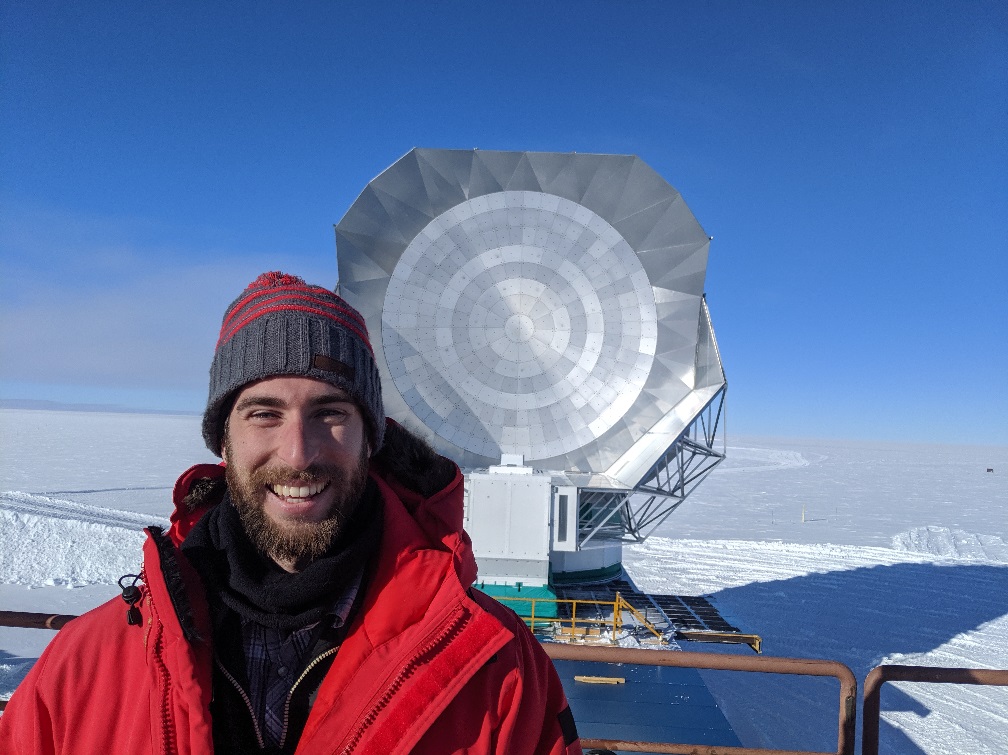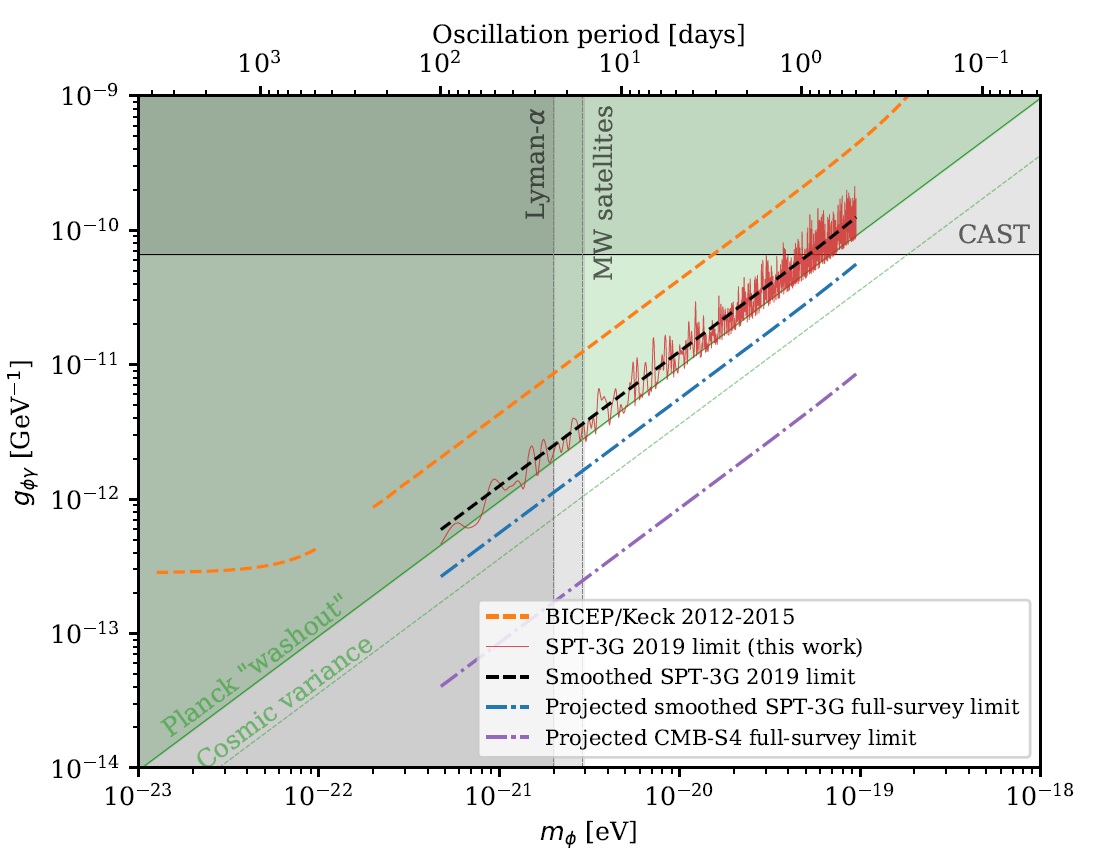Research
Dark matter searches, computer vision, and detector performance testing
I've spent my time in grad school working on the South Pole Telescope (SPT) experiment. Located at the actual, geographic South Pole, SPT studies the oldest light in the universe: the cosmic microwave background, or CMB. The CMB is relic radiation from the Big Bang. By studying it, we can learn about the universe's origin and history; and we can tie our observations on these cosmic scales to particle physics happening on the smallest scales.
Image: Me in front of the SPT primary mirror during my first deployment to the South Pole in early 2020.

